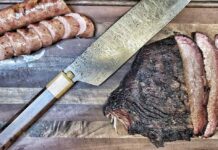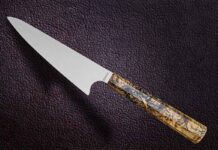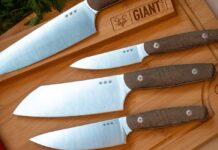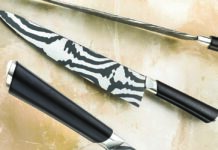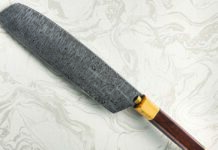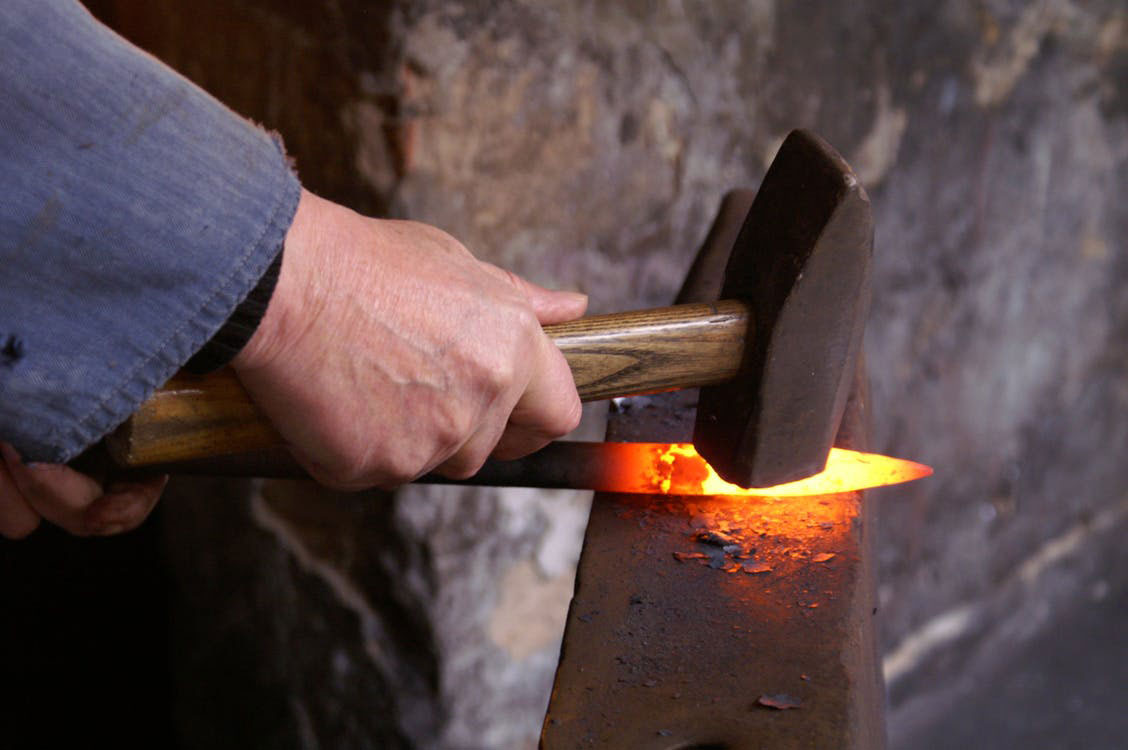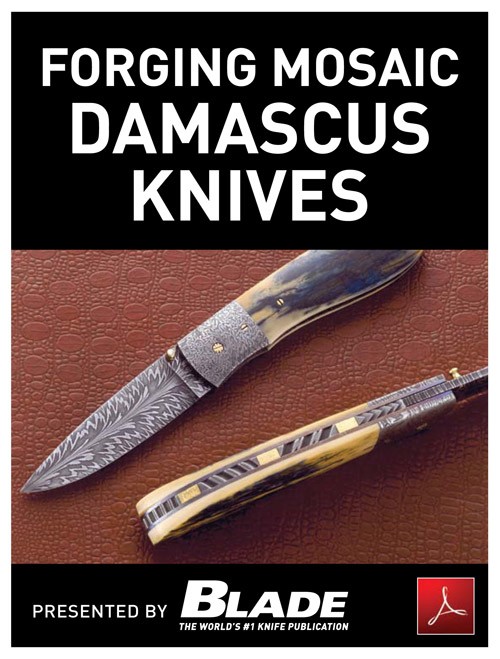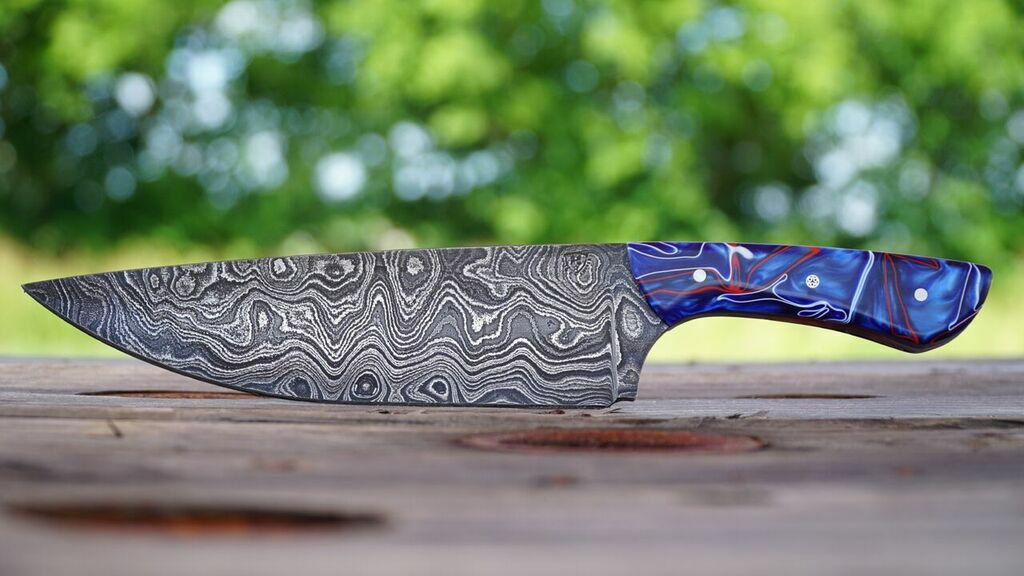Brisket Knife: These Carving Blades Are Bad To The Bone
Prepare massive meat feast with one of these barbecue beasties at hand.
Petty Knife: The Mama Bear Of Food-Prep Tools
Larger than a paring knife, smaller than a chef's knife, the petty knife is right-sized for heavy-duty precision work.
GiantMouse Kitchen Knives: Cooking Up Something New
GiantMouse takes a stab at the culinary world with a kitchen knife line.
Cool Customs: Isaiah Schroeder’s Gyuto
Isaiah Schroeder's gyuto comes in a spectacular damascus pattern and showcases the maker's skill.
Cool Customs: Matt Williams’ BBQ Chef’s Knife
A woodworker by trade, Matt Williams crafts knives meant for rugged use, including his BBQ Chef's Knife.
3 Sporty Kitchen Knives To Use In The Field
Knives are becoming more multidimensional every year. These sporty kitchen knives are ready for the cutting board or the campsite.
First Look: Gerber Devour – Titanium
The new titanium Devour from Gerber Gear is far more than just an eating utensil. This multi-tool really is unlike any other on the market.
Samurai Chef’s Knives
Few knives have been as heavily influenced by Japanese methods as the chef's knife.These four quality blades show off the modern meeting the historic.
BLADE Show West Custom Knife Awards
Awards were given out in nine different custom knife categories including Best In Show at BLADE Show West in Salt Lake City.


